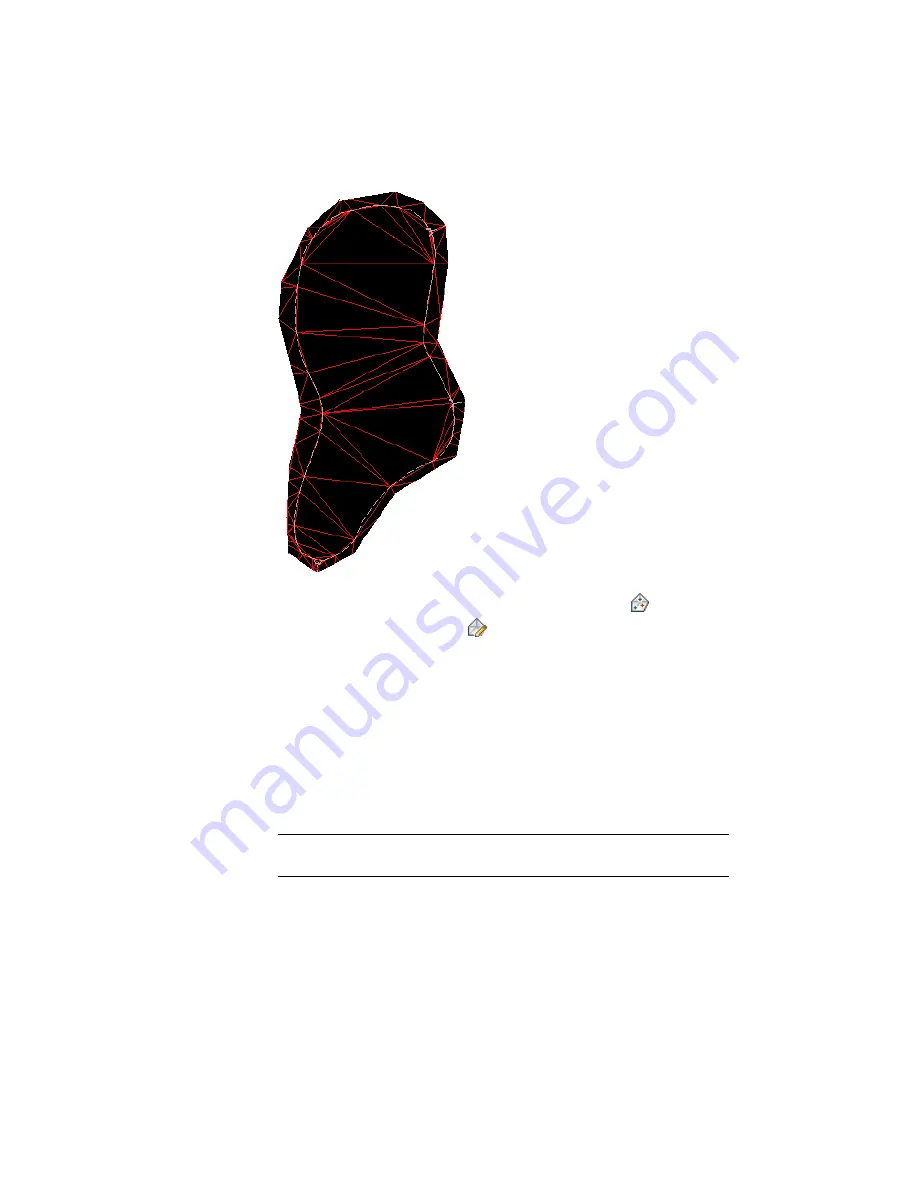
3
In Toolspace, on the Prospector tab, expand the surface
Definition
collection, and right-click the
Edits item.
4
Click Delete Line.
On the command line, you are prompted to select an edge (line) to
remove.
5
Click an edge that crosses the surface of the pond. Press Enter.
The edge is removed and an interior border is created, following the
adjacent TIN lines.
6
Repeat the Delete Line command and remove all TIN lines that cross the
pond surface.
TIP
Enter
C
on the command line to use crossing selection during the delete
line command.
92 | Chapter 5 Surfaces Tutorials
Summary of Contents for AUTOCAD PLANT 3D 2011 - SYSTEM REQUIREMENTS
Page 1: ...AutoCAD Civil 3D 2011 Tutorials April 2010 ...
Page 58: ...46 ...
Page 70: ...58 ...
Page 73: ...Tutorial Creating and Adding Data to a Surface 61 ...
Page 140: ...128 ...
Page 378: ...7 Press Enter 366 Chapter 10 Parcels Tutorials ...
Page 385: ...8 Press Enter Exercise 2 Swinging One End of a Parcel Lot Line 373 ...
Page 432: ...420 ...
Page 470: ...458 ...
Page 506: ...494 Chapter 13 Corridors Tutorials ...
Page 580: ...568 ...
Page 668: ...656 ...
Page 678: ...23 Change your view to SW isometric 666 Chapter 18 Part Builder Tutorials ...
Page 679: ...24 Change your visual style to Conceptual Exercise 2 Defining the Manhole Geometry 667 ...
Page 706: ...694 Chapter 18 Part Builder Tutorials ...
Page 830: ...818 ...
Page 832: ...tutorial folder AutoCAD Civil 3D installation location Help Civil Tutorials 820 Glossary ...






























